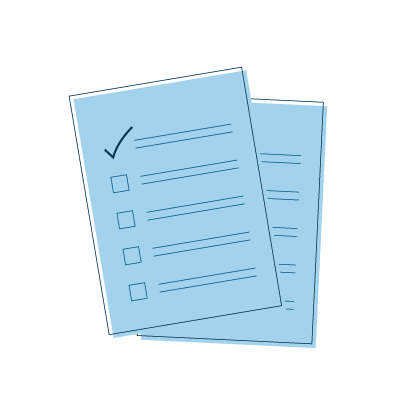We are living in very challenging and surreal times. In response to the novel coronavirus pandemic, countries, cities and states have instituted mandatory restrictions on public gatherings, closed non-essential businesses and given “stay-at-home” orders for their citizens, asking them to remain at home. We hear tips on the news and from organizations like the Centers for Disease Control and Prevention (CDC) suggesting ways to reduce our risk of exposure to the coronavirus as well as transmission to others. It’s impossible to turn on the TV or engage in social media without encountering someone discussing the importance of social distancing as a means to flatten the curve.
Most people are adhering to these guidelines, including employees who have been injured or gotten sick on the job and those already on disability for other medical issues. These employees face some unique challenges in their path to recovery and their return to work efforts, including:
- Unavailability of treatment providers to see them in an outpatient setting
- Cancellations of treatment appointments including physical therapy and psychotherapy
- Jobs moving to a work from home (WFH) setting due to office closures
- Jobs that cannot be modified or accommodated to WFH like retail, manufacturing, maintenance or hospitality
- The effects of heightened stress and anxiety on their recuperation or recovery
This last point might be the most challenging for some. In my role at Sedgwick, I have the privilege of speaking with many injured and ill employees who are working toward recovery and return to work goals. These goals, clear to them only a few weeks ago, now seem difficult to envision. I have yet to speak with someone who hasn’t experienced some fear or anxiety about facing this new reality and many are also feeling overwhelmed when considering the future for themselves, their jobs and their families. It’s a struggle for them to feel hopeful and many lose sight of their own resiliency.
When speaking with an overwhelmed person – and even when considering your own mental health in this stressful time – it’s important to normalize the fears and anxieties of the moment. We’re not machines. We’re having normal reactions to abnormal circumstances. That’s the first step. The next several steps all focus on action. I find it’s helpful to break it down to the basics. Namely, what do we actually have control over, and what do we not have control over? This might vary from person to person, and I believe it’s important to have this conversation with a recovering employee as a way to help them develop their own action steps, maintain focus on their progress and prepare for a return to work when that is feasible. Here are some examples of action steps:
- Focus on what I can do right now, not what may or may not happen in the future
- Reach out to family and friends for emotional support
- Call my treatment provider to see if they have a telemedicine option if their office is closed for in-person visits
- Learn what steps I can take to protect myself, my loved ones, and my community against the spread of the coronavirus
- Consult my physical therapist and inquire about a home exercise program I can do indoors
- If in mental health treatment, make sure I maintain contact by phone, text, email or virtual visits with my treatment providers
- Ask for help when needed, and help others when able
I am a big believer in the “put your own face mask on first before assisting others” approach to helping. This isn’t to say that we should be selfish. Rather, we should remember to take care of ourselves too. This pandemic has impacted all of us, and some of the days to come will feel endless and exhausting. Read on for six areas of focus that can be helpful for injured or ill workers, and for us as individuals, our teams and our colleagues. Remember, we’re all facing challenges now. Focus on what we CAN do.
In addition, here are some trusted resources where you can obtain detailed information regarding COVID-19, as well as mental health support during the pandemic:
- CDC’s coronavirus resource page: https://www.cdc.gov/coronavirus/
- Coronavirus (COVID-19) Q&A from WHO: https://www.who.int/news-room/q-a-detail/q-a-coronaviruses
- Mental health and COVID-19 – information and resources from Mental Health America: https://mhanational.org/covid19
--
6 ways to keep our mental health in check during the COVID-19 pandemic
By Rebecca Sherman, MSW, LMSW, ACSW, Behavioral Health Specialist

#1: Stay informed, but limit exposure
It is important to stay updated on the rapidly changing information regarding COVID-19, but it is also equally important to consume our news in moderation. Information should be obtained from reliable sources, such as the CDC or World Health Organization (WHO) to ensure the information is accurate. Many state health departments offer the ability to sign up for emails regarding new information and guidelines.
Limit exposure in general – immersing yourself in news for too many hours of your day can unnecessarily increase anxieties and promote panic and fear. Stick to a schedule that seems manageable – pick a specific time or times during the day to read or view the news. And try to reserve the last two hours before going to sleep as time without news exposure. We need time for our brains to wind down and rest!

#2: Stick to a schedule and a daily routine
As much as you can, continue to keep up your normal behaviors, routines and practices. If you work out daily, find ways to maintain your practice. If you drink coffee every morning, drink up. Daily routines can help us feel a sense of normalcy, comfort and control, however small, over our day to day. Additionally, as we all adjust to our current circumstances, whether this be working from home or supporting at-home schoolwork for our children, attempt to create new routines and stick to a schedule.

#3: Take extra care of yourself
Know that feelings of anxiety, fear and worry are to be expected. Complaints like insomnia, changes in appetite, feeling uncomfortable or irritable are all considered normal reactions to the current state of the world. This is the time to be extra nice to yourself and those around you. Here are some specific things you can focus on; they may seem simple and basic, but are important to your health and sense of equilibrium.
| *Exercise | *Eat healthy | *Drink plenty of water | *Breathe deeply |
| *Get good sleep | *Take breaks | *Meditate | *Practice yoga or stretching |
| *Ask for help | *Do a puzzle | *Read a book | *Avoid alcohol and drugs |
| *Take a hot bath | *Be forgiving | *Practice gratitude | *Set realistic expectations |

#4 Communicate and check in with others
While we are asked to socially isolate or even shelter in place, we do not need to be completely shut off from our support systems. It is important to check in with loved ones, share your feelings and connect with others. There are so many ways to do this that don’t involve physical contact. Call your aunt who lives alone. Text your daughter. Email your father. FaceTime, Zoom or WhatsApp with your neighbors and friends. Share a good cry or a laugh or even a mundane story from your day. Connectedness will help combat feelings of isolation.
For teams and colleagues, try pairing up with a work “buddy” to check in with twice a week via instant message or phone. It doesn’t have to be lengthy, but even a quick check-in can help – especially if you are both new to working from home. Continue to feed and grow your emotional supports.

#5 Take action where you can
Wash your hands regularly. Disinfect surfaces. Limit your social interactions. Take responsibility for reducing exposure and impacting the virus in a way you can control. Find a way to give back to others who are less fortunate than you are. These actions can be empowering and also can bind us to a larger sense of community and social awareness.

#6 Work on your resilience
There is no time like the present to make a conscious choice to build your resilience. Resiliency is defined as the ability to bounce back in the face of stressful or difficult situations. Focus on changing your thought processes, on positivity, on strengths and things you can impact, control and influence. Work on being hopeful and optimistic about the future. Avoid seeing situations as unsolvable or unmanageable and accept that change (good or bad) is a part of life. Believe that we can and will get through this time and emerge stronger and wiser than we were before. It takes practice, but resiliency will help us get through tough times now and in the future.
> Continue to check Sedgwick’s coronavirus news feed for additional coverage.